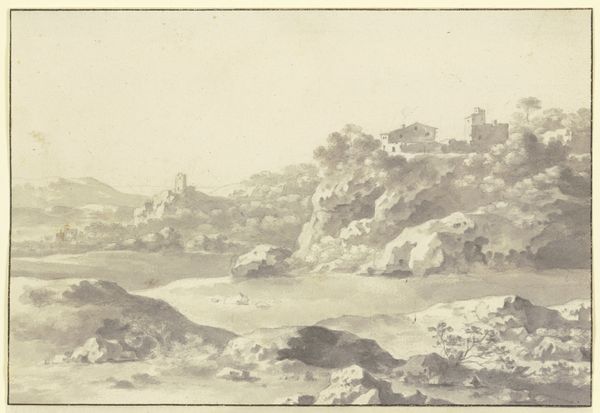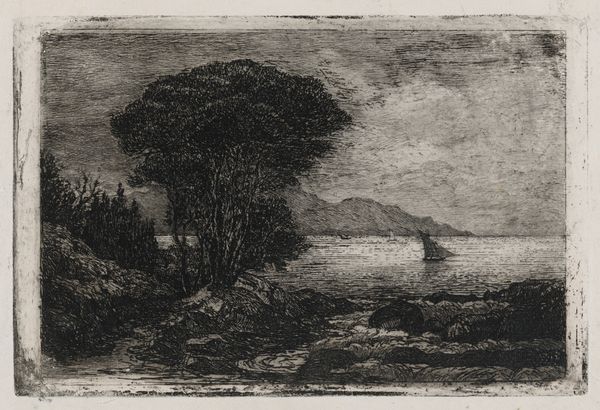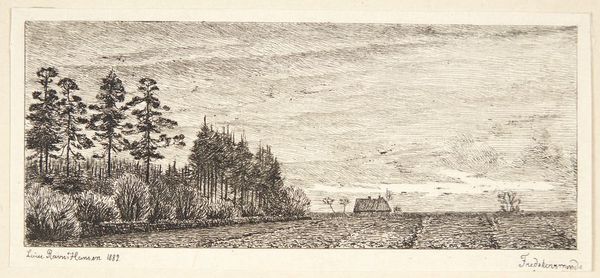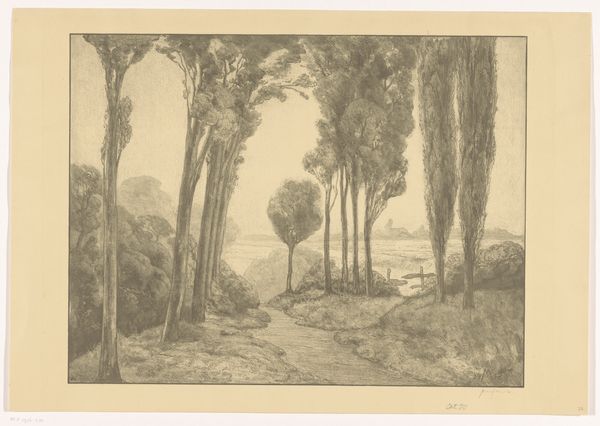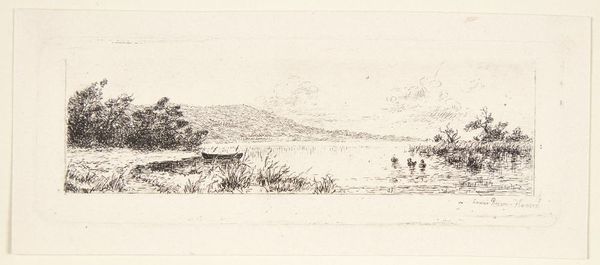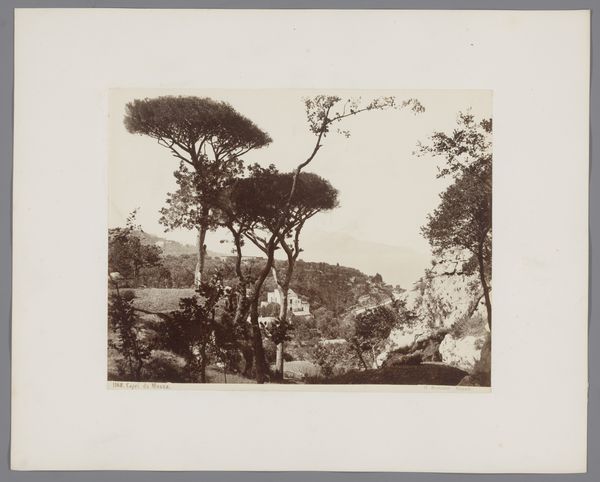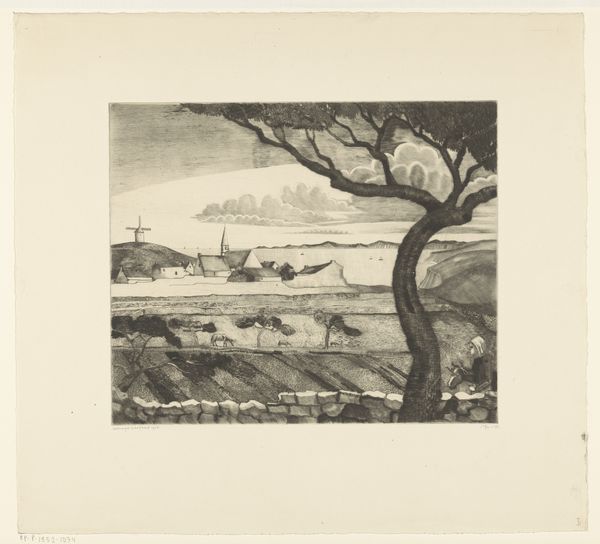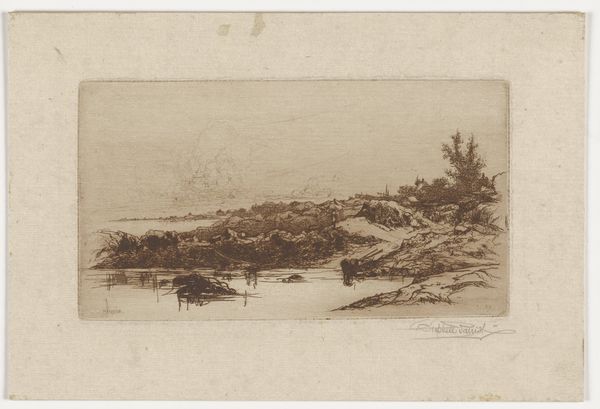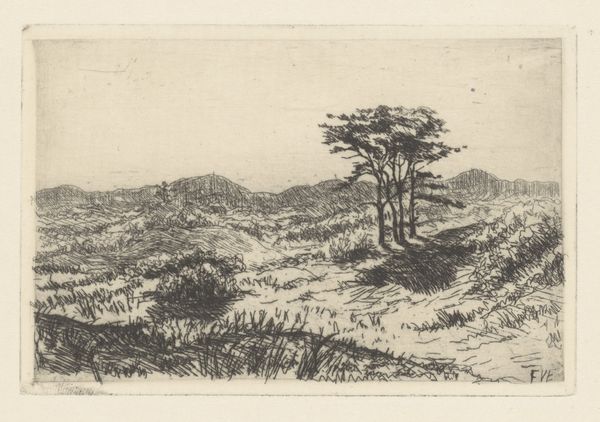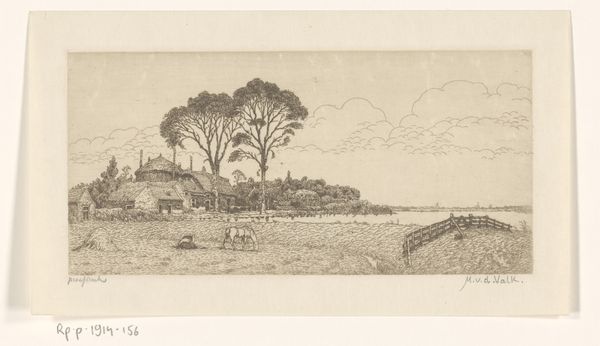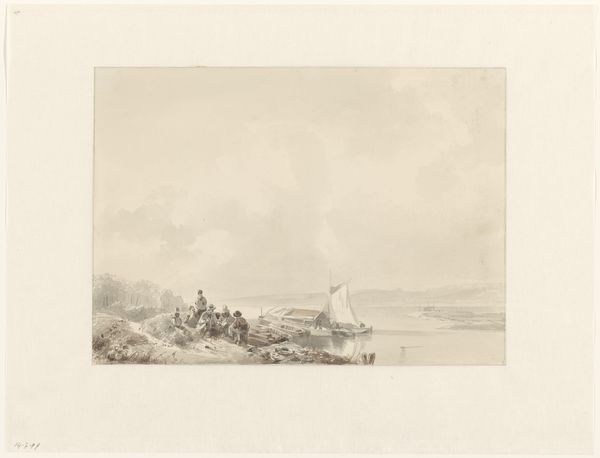
Dimensions: height 418 mm, width 495 mm
Copyright: Rijks Museum: Open Domain
Editor: So, here we have "Gezicht op de Golf van Napels," or "View of the Gulf of Naples," an etching made sometime between 1873 and 1931 by Etienne Bosch. It's got a hazy, almost dreamlike quality. What strikes me is the juxtaposition of the natural landscape with the hints of a city nestled along the coast. How do you interpret the symbols and imagery present in this print? Curator: It’s fascinating how this landscape, through Bosch's rendering, becomes a repository of cultural memory. Look at the almost iconic representation of Vesuvius in the background, forever looming. What emotions does that evoke in you, knowing its history? Editor: Well, knowing about Pompeii, definitely a sense of awe mixed with apprehension. It makes me wonder about the lives of the people living in the city depicted. Curator: Precisely. The city, framed by that potentially destructive force, takes on a particular resonance. And consider the trees. The specific type depicted are evocative, chosen as carriers of particular memories connected to that location. Think about how the image participates in the ongoing construction of what Naples *means*. Are we seeing a romantic ideal, or something more complex? Editor: I see what you mean. It’s more than just a pretty view; it's like the artist is layering history, mythology, and the ever-present threat of nature into the landscape itself. Curator: Indeed. And how that interplay speaks to the viewer's own cultural baggage, their understanding of "Italy," of natural disasters, of the sublime. This etching becomes a site where all those meanings converge. What have you discovered looking at this piece today? Editor: I definitely appreciate it more knowing about the different layers of cultural and historical weight contained within the image.
Comments
No comments
Be the first to comment and join the conversation on the ultimate creative platform.
